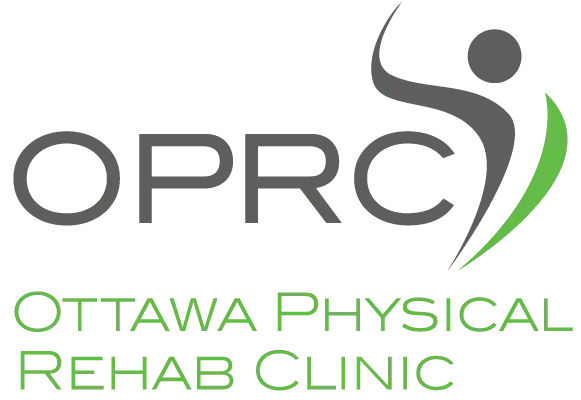
Chiropractic care has gained prominence as a non-invasive approach to managing pain and enhancing well-being. It revolves around the idea that proper function of the body's musculoskeletal structure, particularly the joints, can enable the body to repair itself without surgery or medication. This method is particularly effective for relieving various types of pain, including back pain, neck pain, and headaches. In this blog, we will explore the philosophy behind chiropractic care, the types of pain it can address, the techniques used, and its effectiveness in chronic pain management. We'll also compare chiropractic care with other treatments and discuss its potential in reducing the need for pain medications.
What is the Philosophy of Chiropractic Care When It Comes to Relieving Pain?
The philosophy of chiropractic care emphasizes the body's inherent ability to repair itself with proper functioning of the joints. This approach focuses on manual techniques to restore mobility to joints restricted by tissue injury. By correcting dysfunction, chiropractic care aims to alleviate pain and improve overall body function. Techniques such as joint manipulation, exercise, and ergonomic training are key components of this philosophy. Chiropractic care is holistic, addressing not just symptoms but also lifestyle factors that contribute to pain.
To sum up, chiropractic care centers on restoring joint function to foster the body's natural recovery processes, reduce pain, and improve function.
What Types of Pain Can Chiropractic Care Treat?
Chiropractic care can address a variety of pain types, focusing on issues related to the musculoskeletal system. Commonly treated conditions include back pain, neck pain, and headaches, among others. Here are some specific types of pain that chiropractic care can effectively manage:
| Back Pain | Chiropractic techniques can alleviate lower and upper back pain by improving joint function and reducing muscle tension. |
| Neck Pain | Through targeted joint manipulations, chiropractic care can relieve neck pain and improve flexibility. |
| Headaches | Tension headaches and migraines can be alleviated with chiropractic care, which targets muscle tension and joint dysfunction. |
| Joint Pain | Chiropractic methods can reduce pain in joints such as the knees, shoulders, and hips by improving joint mobility and function. |
| Sciatica | This type of pain, which radiates along the sciatic nerve, can be managed with chiropractic techniques that reduce nerve compression. |
| Sports Injuries | Chiropractic care can aid in the recovery of sports-related injuries, enhancing range of motion and reducing pain. |
| Carpal Tunnel Syndrome | By focusing on wrist and arm mobilizations, chiropractic care can alleviate the symptoms associated with this condition. |
| Arthritis | Chiropractic treatments can help manage arthritis pain by improving joint function and reducing inflammation. |
Overall, chiropractic care addresses a broad spectrum of pain types, focusing on the musculoskeletal system to enhance mobility and reduce discomfort.
Is Chiropractic Care Effective for Chronic Pain Management?
Chiropractic care can be an effective approach for managing chronic pain by focusing on joint function and musculoskeletal health. It aims to address underlying causes of pain rather than merely masking symptoms. Techniques such as joint manipulation and soft tissue therapy are integral to this approach. Chiropractic care often complements other treatments like physiotherapy and exercise, providing a comprehensive plan for chronic pain management. This approach can help reduce reliance on pain medications by promoting natural recovery and improved physical function.
In summary, chiropractic care offers an effective, non-invasive strategy for managing chronic pain by addressing its root causes and enhancing overall function.
What Pain Relief Modalities/Techniques Are Used in Chiropractic Care?
Chiropractic care employs a variety of techniques to alleviate pain and improve function, with joint manipulation being the cornerstone of treatment. Additional modalities include soft tissue therapy, pain relief modalities, and exercise recommendations. Here are some common techniques used:
| Joint Manipulation | This involves the application of controlled force to a joint to restore mobility and reduce nerve irritability. |
| Soft Tissue Therapy | Techniques such as myofascial release target muscle tension and improve muscle function. |
| Therapeutic Exercises | Customized exercises help strengthen muscles and improve flexibility, supporting recovery. |
| Ergonomic and Postural Education | Clients receive guidance on posture and ergonomics to prevent further injury and pain. |
| Traction | Involves gentle stretching of the spine to relieve pressure on spinal nerves and improve function. |
In summary, chiropractic care utilizes a range of techniques, from joint mobilizations to supportive therapies, to manage pain effectively and enhance bodily function.
How Long Does It Take to See Results from Chiropractic Care?
The timeframe for experiencing results from chiropractic care varies depending on factors such as the individual's condition, severity of symptoms, and adherence to treatment recommendations. Some individuals report immediate relief after a single session, while others may require multiple visits to achieve significant improvement. Consistent treatment and following prescribed exercises can accelerate progress. Chiropractic care is often personalized, and practitioners may adjust treatment plans based on the individual's response. Regular re-evaluation helps ensure optimal outcomes.
Overall, while some may experience rapid relief, others may require ongoing sessions to fully benefit from chiropractic care, highlighting the importance of a tailored approach.
How Does Chiropractic Care Compare to and Differ From Other Pain Relief Treatments?
Chiropractic care offers a distinct approach to pain relief, focusing on joint health and musculoskeletal function. It differs from other treatments by emphasizing manual techniques and natural recovery. Here's how it compares:
- Non-Invasive: Unlike surgical options, chiropractic care is non-invasive, reducing recovery time and risk.
- Drug-Free: Chiropractic care avoids medications, focusing on natural methods for pain relief and function improvement.
- Holistic Approach: It addresses the entire musculoskeletal system, contrasting with treatments that target only symptoms.
- Complementary Care: Chiropractic care can be combined with other therapies, such as physiotherapy, for comprehensive treatment.
- Emphasis on Prevention: Chiropractic care includes education on posture and ergonomics to prevent future pain.
- Personalized Plans: Treatment is tailored to individual needs, unlike some standardized medical treatments.
Overall, chiropractic care provides a holistic, non-invasive, and drug-free alternative to other pain relief treatments, emphasizing prevention and natural recovery.
Can Chiropractic Care Reduce the Need for Pain Medications?
Chiropractic care can reduce the need for pain medications by addressing underlying issues that cause pain. Techniques such as joint manipulation and soft tissue therapy target the root causes of discomfort, promoting natural recovery. By improving joint function and musculoskeletal function, chiropractic care can alleviate pain without relying on medication. This approach is beneficial for individuals seeking drug-free options for pain management.
Additionally, chiropractic care often complements other therapies, enhancing overall effectiveness. In summary, chiropractic care can significantly reduce the reliance on pain medications by addressing the root causes of pain and promoting the body's natural recovery processes.
Can Chiropractic Care Help Prevent Future Pain or Injury?
Chiropractic care can play a significant role in preventing future pain or injury by promoting proper function and improving musculoskeletal health. Techniques such as joint mobilizations and exercise guidance are key components. Here are some preventive measures:
- Joint Health Maintenance: Regular sessions help maintain optimal joint health, reducing the risk of injury.
- Muscle Strengthening: Exercises prescribed by chiropractors can enhance muscle strength and stability, preventing strains.
- Postural Education: Guidance on maintaining proper posture reduces the likelihood of repetitive strain injuries.
- Ergonomic Advice: Chiropractors offer advice on setting up workspaces to prevent musculoskeletal pain.
- Flexibility Improvement: Stretching exercises improve flexibility, reducing the risk of injury during physical activities.
- Lifestyle Modifications: Recommendations for lifestyle changes can help manage stress and prevent tension-related pain.
- Regular Check-Ups: Consistent visits to a chiropractor can catch potential issues early, preventing them from developing into pain.
The key takeaways are that chiropractic care can be instrumental in preventing future pain and injury by maintaining joint health and improving overall musculoskeletal function.
Don’t Let Pain Slow You Down
Chiropractic care offers a holistic, non-invasive approach to pain relief and musculoskeletal health. By focusing on joint health and addressing the root causes of pain, it provides effective management for various conditions.
For those seeking a personalized and drug-free method of pain management, Ottawa Physical Rehab Clinic is here to help. Our team is dedicated to creating tailored treatment plans that address your specific needs and enhance your overall well-being. Contact us today to learn how chiropractic care can support your journey towards improved health and pain relief.
Frequently Asked Questions
What Conditions Can Chiropractic Care Address?
Chiropractic care can address conditions related to the musculoskeletal system, including back pain, neck pain, headaches, joint pain, sciatica, sports injuries, and carpal tunnel syndrome.
How Often Should I Visit a Chiropractor?
The frequency of visits depends on your specific condition and response to treatment. Your chiropractor will recommend a schedule tailored to your needs, which could range from weekly to monthly visits.
Is Chiropractic Care Safe for Everyone?
Chiropractic care is generally safe for most individuals. However, it is important to consult with your healthcare provider to determine if it is appropriate for your specific health condition.
Can Chiropractic Care Help with Posture?
Yes, chiropractic care can improve posture by mobilizing the joints and providing guidance on ergonomic practices, which can prevent pain and improve overall function.
What Should I Expect During a Chiropractic Session?
During a chiropractic session, you will undergo an assessment, followed by joint manipulation and possibly other techniques like soft tissue therapy or exercises, all aimed at relieving pain and improving function.

